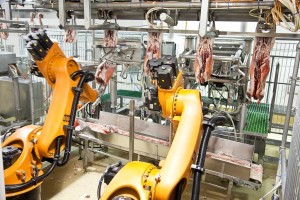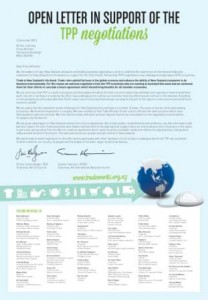 Dunedin-based production equipment specialist and MIA affiliate member Scott – in association with Robotic Technologies (a joint venture between it and meat processor Silver Fern Farms) – has won an $11 million contract to provide lamb boning room automation technology to two Australian meat processors.
Dunedin-based production equipment specialist and MIA affiliate member Scott – in association with Robotic Technologies (a joint venture between it and meat processor Silver Fern Farms) – has won an $11 million contract to provide lamb boning room automation technology to two Australian meat processors.
The Australian Lamb Company (ALC) and JBS Australia, a division of the world’s biggest meat processor, will take receipt of the new equipment, which will be installed and in operation before the end of next year.
After installing a fully automated X-Ray Primal system from Scott in 2010, ALC noticed more accurate cutting through use of the x-ray image on each individual carcase, a significant reduction in bandsaw meat dust and a consistent room product flow. In addition, with two less operational staff operating bandsaws, the company anticipates that that there will be a reduction in Occupational Health and Safety claims.
The biggest surprise, however, for ALC general manager of operations Darren Verrall was the consistent room product flow, which has resulted in an extra 250 carcases being processed each shift.
The X-Ray Primal accurately dissects the lamb carcase into forequarter, middle (rack and loin) and hindquarter segments with the use of the x-ray image to define every bone position. Along with the powered rotary cutting knives that can pitch and yaw at the required angles, the entire system can produce accurate cuts that are just not possible using a traditional manual bandsaw.
On viewing the system in operation at ALC, JBS chief executive Don Jackson contracted Scott to deliver a full automated and integrated X-Ray Primal Middle System for its Bordertown facility in South Australia.
Scott is now working with both companies to determine how to use the individual carcase data obtained from the x-ray system to benefit their producers, in addition to bone-in and boneless forequarter automation developments.
The successful contract assisted Scott’s rise in the 2012 TIN100 Report, which is produced by the Technology Investment Network in association with Industrial Research Ltd to showcase New Zealand’s top high-tech companies. Scott grew an impressive 15.1 percent and graduated from the $20m-$49m category into the $50m-$99m set, with revenues of $53.6 million. In its latest August year-end results, the company has reported a further 19 percent revenue growth to $63.8 million.
In addition, Scott has been recently announced as a finalist in the 2012 Westpac Otago Business Excellence Awards.
More information about the vision for Stage 1 of the technology’s development can be found about the system in the video below. For more information about Scott visit the website www.scott.co.nz.
This article appeared in Food NZ magazine (December 2012/January 2013).






